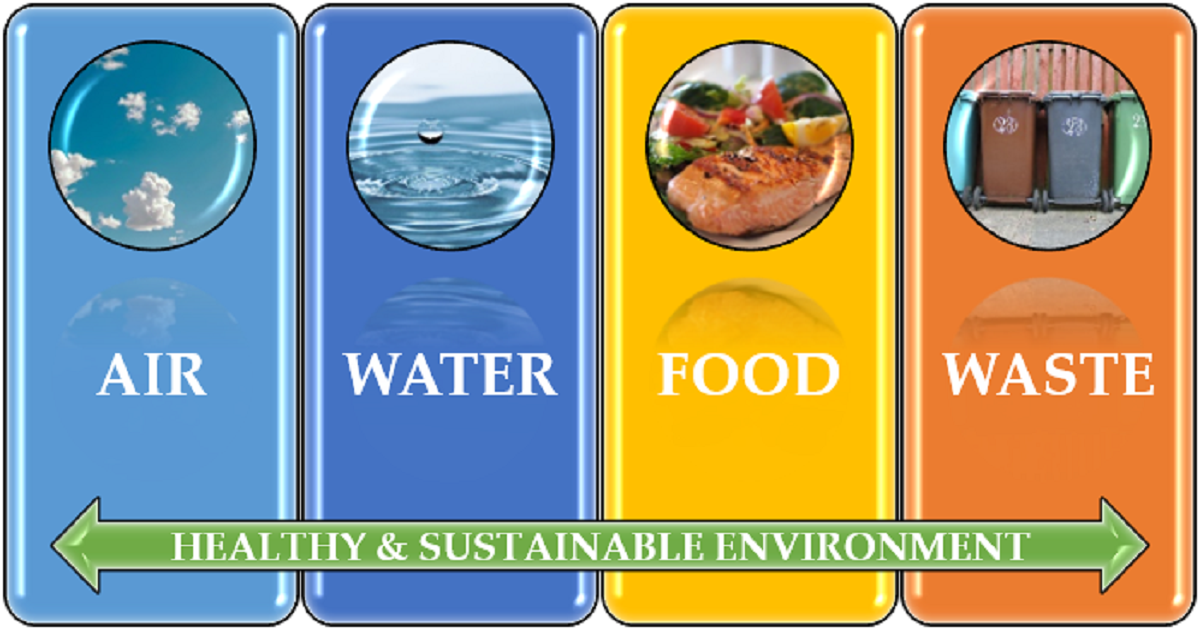Innovative Approaches toward Healthy and Sustainable Environment: Air, Water, Food, and Waste Treatment
A special issue of Sustainability (ISSN 2071-1050). This special issue belongs to the section "Environmental Sustainability and Applications".
Deadline for manuscript submissions: 30 June 2024 | Viewed by 17556

Special Issue Editor
Interests: circular economy; conservation and recycling; drinking water management; environmental engineering; environment science; environmental remediation; life cycle assessment; nature-based solutions; public health; risk assessment; sanitation and hygiene; sustainability; waste management; water and wastewater treatment
Special Issues, Collections and Topics in MDPI journals
Special Issue Information
Dear Colleagues,
The provision of safety is one of the most important elements in the management of environmental sustainability. As an example, the emergence of COVID-19 as a global pandemic demonstrated a high universal demand for a more accurate management of major environmental elements, such as air, water, food, and waste to provide a healthy and sustainable environment.
Accordingly, this Special Issue, which is proposed for the “Environmental Sustainability and Applications” section of the journal Sustainability, aims to collect recent, innovative theoretical and practical management approaches toward the provision of a safe and sustainable environment.
In this Special Issue, original research articles and reviews are welcome. Research areas may include (but are not limited to) the following:
- Air pollution: identification, measurement, treatment;
- Water, sanitation, and hygiene for all: the concept of “Leave No One Behind”;
- Provision of food on the way toward zero hunger;
- Water, energy, and food security nexus;
- Exposure and risk assessment;
- Nature-based solutions;
- Clean technologies;
- Circular economy;
- New policies;
- Any other relevant topics (should be consulted with the editor).
Priority will be given to research conducted in developing countries. In their cover letter, authors should mention to which of the fields below their study corresponds. The “Instructions for Authors” provided by the journal Sustainability should be carefully followed by the authors to prepare their submissions. This Special Issue strictly follows the policies of the journal Sustainability regarding submission, the reviewing process, and publication.
I look forward to receiving your contributions.
Dr. Shervin Hashemi
Guest Editor
Manuscript Submission Information
Manuscripts should be submitted online at www.mdpi.com by registering and logging in to this website. Once you are registered, click here to go to the submission form. Manuscripts can be submitted until the deadline. All submissions that pass pre-check are peer-reviewed. Accepted papers will be published continuously in the journal (as soon as accepted) and will be listed together on the special issue website. Research articles, review articles as well as short communications are invited. For planned papers, a title and short abstract (about 100 words) can be sent to the Editorial Office for announcement on this website.
Submitted manuscripts should not have been published previously, nor be under consideration for publication elsewhere (except conference proceedings papers). All manuscripts are thoroughly refereed through a single-blind peer-review process. A guide for authors and other relevant information for submission of manuscripts is available on the Instructions for Authors page. Sustainability is an international peer-reviewed open access semimonthly journal published by MDPI.
Please visit the Instructions for Authors page before submitting a manuscript. The Article Processing Charge (APC) for publication in this open access journal is 2400 CHF (Swiss Francs). Submitted papers should be well formatted and use good English. Authors may use MDPI's English editing service prior to publication or during author revisions.
Keywords
- air pollution
- circular economy
- clean technologies
- drinking water
- food security
- nature-based solutions
- risk assessment
- sustainable sanitation





